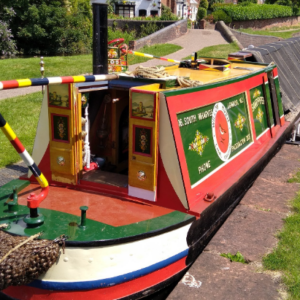Projects: Restoring the Sea-lion at IBTC Lowestoft
The International Boatbuilding Training College (IBTC) at Lowestoft builds and restores a wide variety of vessels, both within the college and at its commercial boat yard. The last few weeks have seen some major restoration work on Swn-Y-Dwr (Sea Lion), a 36-foot steel motor yacht built in the late 1960s. Lewis Phillips of IBTC’s Marine Services talks us through replacing the old cabin roofs on Sea Lion.
How did the project come about?
Although we’re better known for working with wooden boats and traditional finishes, the Lowestoft team are equally at home using modern materials. I have 25 years’ experience as a boat builder but I still like to keep my skills up-to-date and it’s always interesting to work on a different project.
Which WEST SYSTEM® or PRO-SET® epoxy products did you use? Talk us through the process
I’m no stranger when it comes to working with WEST SYSTEM® epoxy and it’s ideal for this type of work.
I started by laminating together two layers of Robbins Elite plywood using WEST SYSTEM 105 Epoxy Resin® and WEST SYSTEM 205 Hardener®, to form her gentle-curved tops.
I then sealed the surface with WEST SYSTEM 746 Woven Roving Glass Fabric, which is the best way to protect it from the elements.
For fairing the plywood, I used a mixture of mixed epoxy and WEST SYSTEM 407 Low Density Filler, before coating it in another layer of epoxy to prevent any air bubbles coming out of the wood beneath the sheathing. When fully cured, it was cleaned and rubbed down.
Two more layers of mixed epoxy were applied, wet on wet to build up a polished, watertight coating. This method provides an immensely smooth and hard wearing surface which I’ll prime and coat with a two-pack polyurethane paint.
The next task is to apply non-slip patches in the traditional way using fine sand bedded down onto the paint, then overpaint them to create a practical and attractive pattern to complete the decks.
What was the most rewarding part of the project?
The satisfaction of doing a good job that will protect the boat for many years to come.
What are your top tips for boatbuilders looking to start a similar project?
I prefer to lay the glass fabric onto the surface dry and pour the epoxy onto it in neat 600ml batches, allowing it to soak through before gently ‘squeegeeing’ it out towards the edges. This way, you’re less likely to get obstinate wrinkles which are difficult to remove. The heat waves during the summer made work unpredictable, so using 105 Resin with 206 Slow Hardener® allowed more working time.
Many thanks to Gary Breeze and IBTC Lowestoft for their contribution to this article.
To find out more about the restoration of Sea Lion, contact IBTC Lowestoft on 44 (0)1502 569663 or email info@ibtc.co.uk.




